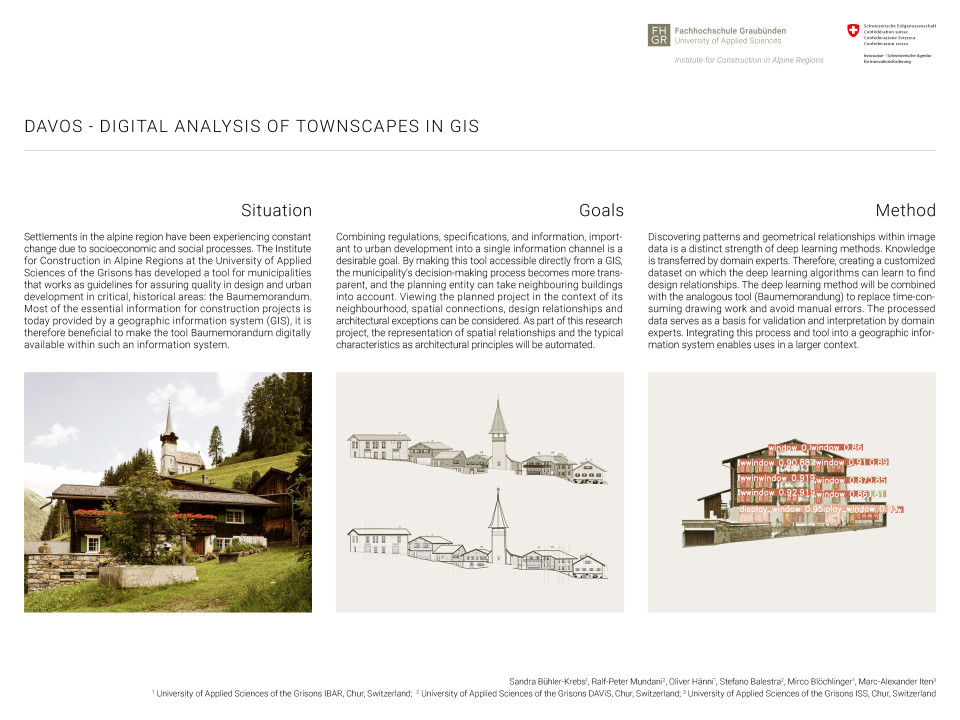Settlements in the alpine region have been experiencing a constant change due to socio-economic and social processes. Urban development and Baukultur have been active research areas for many years. The Institute for Construction in Alpine Regions (IBAR) at the University of Applied Sciences of the Grisons has developed a tool (Baumemorandum) for architecture offices and municipalities that works as guidelines for assuring quality in design and urban development in critical, historical areas. The Baumemorandum consists of three elements: fundamentals, context memorandum, and facade memorandum. These are available in printed form. Since most of the essential information for construction projects are today provided by a geographic information system (GIS), it is therefore beneficial to make this tool digitally available within such systems.
By making this tool accessible directly from GIS, the municipality's decision-making process becomes more transparent, and the planning entity can take neighbouring buildings into account. Viewing the planned project in the context of its neighbourhood, spatial connections, design relationships, and architectural exceptions can be considered. As part of this research project, the representation of spatial relationships and the typical characteristics as architectural principles will be automated.
Discovering patterns and geometrical relationships within image data is a distinct strength of deep learning methods. Knowledge is transferred by domain experts annotating multiple masks on point-cloud data collected specifically for this use case. Therefore, creating a customised dataset on which the deep learning algorithms can learn to find design relationships. The deep learning method will be combined with the analogous tool (Baumemorandung) to replace time-consuming drawing work and avoid manual errors. The processed data serves as a basis for validation and interpretation by domain experts. Integrating this process and tool into GIS enables usage in a larger context and opens further research questions.
Combining regulations, specifications, and information important to urban development into a single information channel (GIS) is a desirable goal. In the best case, this streamlines decisions and new development, as well as supports decision makers and architects. The digital Baumemorandum creates legal certainty, particularly with regard to the question of appropriate integration into the townscape. As a partner of the Innosuisse project, Davos Monstein will be the first municipality to implement the digital Baumemorandum.
There are some limitations to this technology, for example, the detection of structures important for spatial connections and design relationships is highly dependent on the quality of data. Furthermore, is it very difficult to find aesthetically pleasing architectural patterns if they have not been trained before. Therefore, artificial intelligence will never decide on its own what is beautiful. However, artificial intelligence will be able to recognize the extent to which a new building is able to take up the typical characteristics of a specific village or city centre. In the end, decisions will still be made by the building authorities and the population.
Currently and in the future, there continuous to be a collective interest in ensuring the quality of local living and working environments and retaining the identification with it. The concept of City Information Modelling (CIM), a combination of building data (BIM) and terrain data (GIS) with other information sources, works with digital city models to allow future planning to be simulated using a digital twin on district or city level to help the urban development achieving this.
